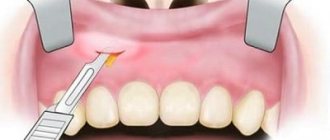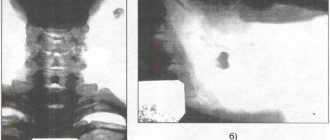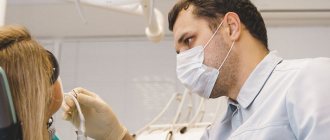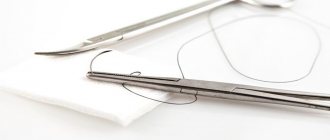100% Recommendations after tooth extraction
Tooth extraction is, first of all, an operation. Of course, its success depends on the skill of the dentist, but you can speed up the healing process. Follow the doctor’s advice strictly, and very soon you won’t even remember that you visited the dentist’s office. In case you forgot the doctor’s words, here are all the basic recommendations after tooth extraction from the dentists of the ART-Dent clinic.
Is it possible to return to a normal lifestyle?
It is important to pay attention not only to hygienic care of the hole, but also to habits in general. These, as well as lifestyle, can significantly affect healing. Therefore, out of a sense of caution and self-preservation, it is better to temporarily refrain from certain habits. The following points are worth noting:
- It is highly advisable to refrain from smoking and drinking alcohol on the day of surgery (or better yet, several days after). Tobacco dries out the mucous membranes and can cause dry socket syndrome. And alcohol and pills are generally incompatible.
- Do not touch the hole with your tongue or create a vacuum in your mouth. The latter is relevant for those who are used to sucking their lips. These actions can break up the blood clot.
- It is better to refrain from physical education and physical labor for a couple of days, and it is advisable to sleep on a high pillow.
- Ideally, you should avoid high temperatures (steam rooms, baths) and hot compresses, which can cause bleeding.
- After removal, you cannot eat for several hours. Then for at least a week you need to make sure that the food is soft, liquid, not cold and not hot. It is better not only not to chew on the healing side, but also to prevent food from getting there at all.
- You need to brush your teeth very carefully, especially near the wound. In the evening after removal, it is better to abandon the procedure.
What to do with pain
The main fear before tooth extraction is pain. In fact, the operation is painless, because... takes place under anesthesia, which will remain in effect for another two hours after the procedure. Then the pain will begin to increase. Any painkiller already familiar to you or prescribed by a doctor will help eliminate them.
Most often, doctors advise Ketanov, Ketorol or the most common Nurofen. Mild discomfort continues for a couple of days.
With proper tooth extraction, the pain should not intensify, but if this happens, you should definitely consult a doctor.
How to avoid bleeding
Immediately after surgery, the dentist will place a gauze pad in the hole to stop the bleeding. You need to immediately clench your jaw tightly and hold the tampon for at least 20 minutes.
If you have high blood pressure or blood clotting problems, you may need to keep the tampon in place for 40 minutes or even an hour.
During this time, a blood clot forms in the hole. It plays a very important role - it protects the wound from bacteria, food debris, and dental plaque, because... their entry into an empty socket can lead to inflammation and infection.
What happens in the oral cavity during the extraction of the eighth tooth?
When deciding how to treat a particular patient, the doctor takes into account the characteristics of his physical and emotional state. Particular attention is paid to the presence of allergies to medications.
If there are no contraindications to extraction, the doctor administers an anesthetic. When the area becomes insensitive, the gum bends back and grabs the wisdom tooth with forceps. Begins to make rocking movements, allowing you to loosen the periodontal connection and extract the diseased tooth.
Since during the operation the vessels through which blood flows to the pulp tissues are damaged, bleeding occurs. Nerve impulses indicating trauma are transmitted to the brain. Then pain appears. But due to the action of the anesthetic, the patient does not feel it at first.
The hole formed as a result of the operation is heavily supplied with blood. Leukocytes rush here. Swelling occurs and inflammation develops.
Immediately after surgery, the doctor closes the wound with a sterile cotton swab. It helps stop bleeding and creates conditions for the formation of a dense blood clot. The latter is needed to prevent the penetration of pathogenic microorganisms into the tissues of the wound surface. Do not remove the tampon before the doctor says!
How to rinse your mouth
Recommendations after molar tooth extraction always include a ban on rinsing on the first day after surgery - this procedure can remove a blood clot from the socket.
In the following days, rinsing with herbs - a decoction of oak bark, chamomile, calendula - will be useful to relieve inflammation and speed up the healing process. Among the medications you can use miramistin, furatsilin or chlorhexidine. A water-salt solution is also suitable.
The rinsing technique is simple: take the solution or decoction into your mouth, hold it for 20 minutes and carefully spit it out. No sudden movements.
How long does it take for the mucous membrane to heal after removal?
The duration of the healing process depends on a large number of factors. First of all, the difficulty of removal matters. The removal technique also has an effect, that is, extirpation of the roots in parts, cutting of the tooth. It is important to take into account the initial condition when visiting the dentist. The hole will take longer to heal if the tooth is located outside the dental arch, grew in the jaw at an angle, or was located horizontally in the dentition. The presence of an inflammatory process near the tooth, especially signs of purulent inflammation and pericoronitis, also increases the healing period.
When sutures are applied after a simple removal, within a week the patient will forget about the procedure, but it is too early to think about prosthetics or implantation. With complex removal, the healing process will take slightly longer. If complications arise after surgical treatment, wound sanitation, treatment, and suturing are required, then the time for complete healing may increase to 20 days. Complete restoration of the mucosa takes at least three weeks. Only after this can implantation and prosthetics be performed in the area of the removed wisdom tooth.
Normally, gums must go through several stages:
When going to the dentist, it is recommended to immediately plan your day. This is especially true if there are already signs of inflammation or the teeth are severely damaged, that is, a difficult extraction is expected. Recommendations after wisdom tooth removal include, first of all, complete rest on the day after surgery. You should not make sudden movements, bend over, visit baths and saunas, or take a hot bath. It is prohibited to play sports or do any work while bending over. The best option would be complete rest. There is no need to do any special procedures on the day of the operation.
Smokers are advised to abstain from cigarettes if possible for three days or more if there are signs of complications. Nicotine causes vasoconstriction and disrupts tissue nutrition, which slows down regeneration processes. In addition, the risk of wound infection increases.
After a couple of days, you should visit the dentist who performed the procedure to assess the condition of the tissue and the healing process. This must be done even if the patient is not bothered. If signs of complications appear, pain and swelling increase, and bleeding does not stop, consult a doctor without waiting for the appointed date.
If sutures were placed on the wound, they are removed after 8-10 days, or a follow-up examination is scheduled if self-absorbable material was used for the sutures.
Do not touch the wound or try to remove part of the clot or remnants of the medicine in the form of sponges. This will only worsen the situation and cause complications.
What do we have to do?
On the first day, do not rinse your mouth. From the second day, procedures can be carried out. In this case, you do not need to intensively rinse the contents of the hole; just hold the solution on the sore side for a few seconds and spit. You need to repeat the procedure several times a day, especially after meals.
Chlorhexidine, furatsilin, miramistin, and potassium permanganate can be used as a rinsing solution. It is also possible to use herbal decoctions, for example, sage, chamomile, calendula or dental collection.
Pain may occur after the anesthetic wears off. To eliminate them, the dentist must prescribe analgesics. If there is no prescription, you can take any painkiller that the patient is used to using for pain. If the pain increases and the tablets do not help, you cannot increase the dosage. An increase in symptoms indicates a complication that requires medical intervention.
If you don't want to take medication, you can use a cold compress. These can be ice cubes wrapped in a towel. They need to be applied for several minutes, avoiding hypothermia of nearby organs, in particular the ear and tonsils.
If there is a high risk of inflammation, as well as if there is purulent discharge at the time of surgery, the dentist will definitely prescribe antibiotics. The doctor calculates the name of the drug and duration of use individually.
Features of nutrition after surgery
After wisdom tooth removal, it is forbidden to eat for two hours. If after the specified time the effect of the anesthetic still persists, it is better to wait until sensitivity appears. Eating food with a numb tongue and cheeks can cause injury to the mucous membrane.
On the first day after surgery, you can only eat warm food and drinks. Products should be soft, for example, cereals, chopped soups, yoghurts. Next, you should follow simple recommendations for several days:
- Avoid hot or too cold food.
- Avoid eating hard foods such as crackers and nuts.
- Chew food only on the healthy side so as not to put stress on the wound.
- After eating, be sure to rinse your mouth.
- You can include more fruits and vegetables in your diet to boost immune strength, or supplement with complex vitamins from the pharmacy.
You cannot drink alcoholic beverages. It is also recommended to reduce sweet foods in the first days, as they create a favorable environment for the development of bacteria.
Features of oral hygiene after removal
On the first day after extirpation, you should abandon the usual brushing of your teeth, limiting yourself to a light rinse before going to bed to remove any remaining food. The next day, you are allowed to use a toothbrush and toothpaste, but the surgical site is treated with special care. When brushing your teeth, do not forget that you cannot actively rinse your mouth. After three days, the wound will have healed and you can return to your usual hygiene regimen and brush your teeth twice a day.
What and when to eat
You can't eat or drink for the first three hours. First, during anesthesia, you can bite your cheek or tongue. Secondly, the blood clot must harden in the hole.
After this, you can eat, but you should avoid hot, cold, spicy and rough foods. You should absolutely not drink hot drinks: they will not only increase blood flow, but can also dissolve the protective clot.
If the removal was difficult, the dentist will recommend a diet of soft and liquid foods for a day or two.
Chew food with the teeth located on the non-operated side.
What to do before deleting the eight
There are a number of rules to make surgery safer and reduce the risk of postoperative complications. Among them:
- Eat one to three hours before visiting the dentist (but if general anesthesia is planned, you cannot eat!). A preliminary meal before extraction, performed under local anesthesia, promotes better blood clotting and improves the patient’s physical condition.
- Carry out removal in the first half of the day (preferably in the morning). In the morning hours, the human body copes better with stressful situations. In addition, if the procedure is scheduled for the evening, the patient may experience insomnia due to persistent pain and nervous tension.
- Do not drink alcoholic beverages on the eve of surgery. They negatively affect the rheological properties of blood, which means that the risk of swelling and bleeding will increase.
- In case of severe anxiety, take a sedative of herbal origin. It is important that the person is not allergic to the drug used.
To remove the figure eight, you need to choose a clinic and a dental surgeon whose reputation is beyond doubt. Then the patient will be able to relax better, which means the procedure will be more comfortable.
You can cool it, but you can’t heat it up.
A cold compress will help reduce swelling and bleeding. But it should be used only on the recommendation of a doctor. Cold is applied through a thin cloth and held for no more than 25 minutes, otherwise hypothermia will occur, which can lead to unpleasant consequences.
Overheating can lead to inflammation or secondary bleeding. Therefore, for some time you need to forget about a hot bath, solarium.
How is healing going?
- First, blood clotting occurs and bleeding stops.
- On the 3rd day after surgery, soft granulation tissue begins to develop in the form of white crusts on the surface of the socket.
- After two weeks, the hole is completely filled with granulation tissue and the growth of young bone tissue begins.
- From 14 to 45 days, the hole is overgrown with bone tissue.
- After three months, the bone tissue fully matures.
Dentistry for those who love to smile
+7
Make an appointment
Is it possible to brush your teeth
Oral hygiene must be observed. But there are a few points worth paying attention to:
- Do not touch the hole with the brush,
- reduce the amount of paste,
- rinse your mouth very carefully and slowly.
And one more thing: never take medications without a doctor’s prescription. In simple cases, medications will not be needed, at most a light pain reliever. In difficult cases, the dentist will prescribe an antibiotic and an antihistamine.
Using these recommendations, you will survive tooth extraction easily and unnoticed. If you have any other questions, call ART Dent dentistry, our specialists will definitely help you.











